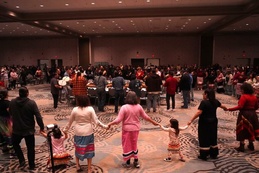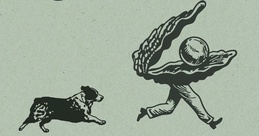These Dam Decisions
June 6, 2010
These Dam DecisionsBy Anne Stanton
When Traverse City Light and Power proposed building a 10 megawatt biomass
plant (or three or four) earlier this year, people wondered about the
wisdom of removing the three Boardman River dams, which once produced more
than 2 megawatts of energy each year, enough to power 1,400 homes. The
owners, the city of Traverse City and Grand Traverse County, voted last
year to dismantle them, but people wonder if it’s too late to reconsider.
The cost to remove the dams is about the same as to bring them into
compliance and add upgrades to get the river colder.
Last week, the Express revisited claims that the dams would be
unprofitable. Utility professionals said the financial analysis failed to
consider federal stimulus money, along with higher rates that renewable
energy can now command. This week, the Express will examine the
environmental arguments for removing the dam.
Toward the mouth of Grand Traverse Bay the Boardman River serenely flows
18.5 miles from the river’s most far-flung dam, the Brown Bridge Dam.
Pressure to remove the dams has flowed from people and groups who want to
see the river run fast and free as it once did before the dams were
erected some 100 years ago. Kayakers and canoeists want the challenge of
white water with no barriers. Trout fishermen crave a cold river that
supports steelhead and sturgeon, and a greater abundance of fish (studies
show a third fewer fish live in the warmer, confined river, as compared to
upstream waters).
And then there are folks like Jim McIntyre, a Boardman Pond homeowner, who
simply believes wild rivers are precious. Dams increase sediment that harm
fish, warm water, disrupt the water flow, and dramatically change nature’s
ecosystem.
Added Ken Gum, an avid fly fisherman: A free-flowing, wild river isn’t
worth a couple megawatts of power: “We can build a nuclear power plant or
a field of wind turbines, or even a wood burning power plant . . . but
we’ll never be able to build a river.”
BE CAREFUL WHAT YOU WISH FOR
But some say to proceed with caution. The dams have long protected the
Boardman River from disease and alien species found in the Great Lakes,
including sea lamprey, a fish-sucking parasite.
That’s why the decision was made to keep the Union Street dam intact as a
barrier, while removing the Sabin, Boardman Pond, and Brown Bridge dams.
Bill Scharf, a retired Northwestern Michigan College biology instructor
and researcher, says that steelhead trout—the prize fighter among
trout—should also be blocked. He considers steelhead a Trojan fish
because they are tainted with PCBs (polychlorinated biphenyls), which
feminize fish and mammals and weaken eagle eggs.
“Otters and mink are extremely sensitive to the toxins in the fish and so
are the snapping turtles. I told them (the Boardman River Dam Committee)
that they are playing with the system.
“Aldo Leopold once said, when one tinkers with an ecosystem, it’s like a
clock. If you start taking pieces out, you better save all the pieces.”
For a larger perspective, Scharf recommends a book by Yale-educated
biologist Anders Halverson: An Entirely Synthetic Fish: How Rainbow Trout
Beguiled American and Overran the World. Contacted by Express, Halverson
said the effects of the worldwide planting of steelhead (the migrating
version of rainbow trout) have been good and bad, depending on the river.
“The effects are almost always unpredictable. Be ready to adapt and be
ready for something you didn’t expect to happen.”
The DNRE’s Todd Kalish is aware of the issue; it’s one reason why PCB
laden salmon won’t be passed up the Boardman River. After salmon spawn,
they die and litter the bank, an easy meal for bald eagles, said Kalish,
who is heading the implementation team to remove the dams.
Steelhead, on the other hand, do not die after spawning and return to Lake
Michigan (although, in a weakened state, many do die). He also said that a
recent state study shows PCB levels in steelhead trout are just above the
“no adverse effects” concentration level. That’s the level set by a 1990
multi-agency study, which studied the breeding success of eagles at
certain levels of PCBs in fish.
Because of that study, the U.S. Fish and Wildlife Service has not required
the passage of fish at Consumer Energy’s dams on the Manistee, Muskegon,
and Au Sable Rivers, and won’t until contaminant concentrations in Great
Lakes fish no longer pose a hazard to wildlife, said Gary Dawson, the
company’s environmental services director.
The DNRE believes PCB-laden fish will become a non-issue, owing to
declining PCB levels each decade. In 2004, steelhead collected from two
sites on Lake Michigan from the weirs of Little Manistee River and St.
Joseph River showed a significant decline from 1994.
“The results showed the average PCB concentration was .4 parts per
million, almost half of it was 20 years before. The other thing you need
to keep in mind, assuming they pass the fish upstream, is that eagles will
be eating smaller fish with lower PCB concentrations,” said Joe Buhr a
DNRE’s aquatic biologist.
Yet Gary Dawson said that PCB levels aren’t going down fast enough and far
exceed the no adverse effects level of .007 parts per million. PCB levels
of salmon in what’s known as the Lamberti study* showed .4130 parts per
million of PCB contamination. That’s 58 times the level and easily enough
to contaminate other smaller fish that sensitive mink, otter, and eagle
eat.
The Lamberti study contrasted two streams of the Manistee River. One was
populated by PCB-laden Pacific salmon, the other had none.
Researchers found that species of fish in the salmon stream--the native
sculpin, dace, and brook trout--had anywhere from 50 times to 79 times the
level of PCB concentrations of fish in the no-salmon stream.
That’s because fish eat fish eggs.
“The eggs are oily and PCBs are attracted to the lipids in the oily eggs,
so you have higher PCB concentrations in the eggs than you do in the
fish,” Dawson said.
Steelhead will pose a lesser threat than salmon because they don’t die
after spawning, but they spoil rivers in other ways.
When a steelhead fish makes a nest in the gravel to spawn, they chase
other fish away and injure what’s called the substrate, the home of stream
insects, such as larvae, according to another recent study headed by G.A.
Lamberti of the University of Notre Dame.
“The Lamberti study shows the steelhead actually reduce the abundance of
insect larvae, part of the food chain. What they saw in these Midwest
rivers is they reduce the amount of food available to local fish,” he
said..
“In addition to this, when you allow these fish to pass from the Great
Lakes, there are a lot of potential issues of carrying diseases up into
the rivers. The state is taking a very hard look at this issue, reducing
the fish they are stocking because of what’s called viral hemorrhagic
septicemia—that could be carried into the streams by the fish. They don’t
want the river fish contaminated. If the steelhead comes up, it’s possible
they can bring VHS and other diseases.”
The lake sturgeon, another fish that’s been discussed for river passage,
lives until 40 years old, enough time to collect large amounts of PCBs.
The most recent data shows sturgeon eggs contain up to 3.8 parts per
million of PCBs, over 500 times the no adverse effects level, Dawson said.
“This is something I’m concerned about. On the one hand, passing fish over
these dams and connecting rivers is one of the things people strive to do,
and it makes sense in a lot of situations. But when you have contaminants,
invasives, and diseases, it seems to me that we really should be trying
our best or making our best effort to keep the fish stocks in the upper
reaches, pure and intact, if you will.
“The state has taken a lot harder look, keeping salmon out and allowing
steelhead in—they are looking at this as a trade-off—but they’re still
running a risk.
“Steelhead are a lot of fun to fish, I love to fish for them myself, I
love fly fishing for them, but I also value native brook trout fisheries
even more. They’re not as big, they don’t bend the rod as much, but I
guess my predilection is I value brook trout over anything imported.”
Kalish said the DNRE will monitor the effects of PCBs in wildlife, but
Scharf worries that once PCBs are released into the long-protected river,
it’s too late. PCBs don’t break down and you can’t do a recall.
RIVER SLOBS
McIntyre said he has no desire to see steelhead trout passed if there’s a
potential for damage, but he does want a free-flowing river. Other fly
fisherman, like Mike Delp, are worried that opening the river to steelhead
will attracts droves of careless fishermen. The Betsie River in Benzie
County, for example, is strewn with garbage, beer cans, and monofilament
line. Someone even erected a makeshift outhouse without a door.
There is the added complication that newly exposed bottomlands are
publicly owned. Will fishermen invade privacy and erode the unstable
river banks?
Ken Gum hopes the DNRE will consider regulating the river, such as
allowing access for fly fishermen, but not bait fishermen.
But even with regulations, not all sport fishermen agree entirely on dam
removal. Chris Smith of Interlochen says he will miss the diversity of
pond and wetlands habitat that’s evolved over the century.
“In the end, my beef is I like the Brown Bridge Quiet Area. I like the
lake; it supports a host of wildlife. Would (removing the dams) improve
the fishing? Sure. But there are still all kinds of fish and waterfowl up
there. Maybe we could leave the Brown Bridge dam up as a quiet area to
canoe and kayak. I like that pond, and I’ve liked how the river goes into
ponds, creating a whole different habitat.”
McIntyre wants the natural river back, but has sympathy for those who have
lost their pond and property values. He wishes the county and city would
have looked at all the options. “I think they became so frustrated with
the controversy and difficult personalities, they just decided the three
dams would go.”
Editor’s Note: Last week’s article should have said the cost estimates for
constructing fish ladders are: Sabin ($1.5-2 million), Boardman ($2-2.5
million), Brown Bridge ($2-2.5 million). The cost estimate of the
currently proposed fish passage at Union Street dam is $2.9 million.
*The “Lamberti” study (named for the principal investigator) was jointly
conducted by a Lake Superior State University, the University of Notre
Dame, Grand Valley State, and Treat Lakes Fishery Trust.
Trending

Our Top Stories of 2025
Each year, we look back at the stories we’ve shared over the last 12 months and pull together the ones that got the mo… Read More >>
A Solo Rattler
Frontman of folk-rock band Michigan Rattlers Graham Young brings his solo performance to Great Lakes Center for the Arts in … Read More >>
GTB Starting the Year with Tradition
The Grand Traverse Band of Ottawa and Chippewa Indians hosts the Kchi Wiikwedong Anishinaabek Maawnjidowin Round Dance on Ja… Read More >>


